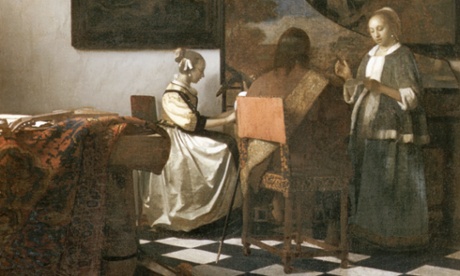
The problem with history is that we ask the wrong questions. Or perhaps it’s that we don’t know that there are questions we should be asking. In Britain we often live in 19th-century housing, so we assume we know how 19th-century people lived – just like us, only with funny clothes, and worse dentistry. But understanding what the notion of home meant to these people who slept in the same rooms and climbed the same stairs is far harder than it seems.
One of the triggers for The Making of Home was a 1990s report on family cohesion. A group of psychiatrists set up a study using the number of times a week families ate together as their measure of family togetherness. The idea that “family” meant sitting around a dinner table was interesting in itself. But the unexamined beliefs of the researchers were even more interesting: they concluded that family dinner-time was in decline, even as they acknowledged in the same sentence that there were no figures at all from earlier decades. These were scientists, but they couldn’t shake the Norman Rockwell-ish image of a happy family gathered around a table.
As a historian, this called to me on so many levels. First, and most important, I knew that these scientists were not talking about reality of history because I knew that, as late as the 18th century, most families had neither dining tables, nor enough chairs, for their family members, and that at best people ate perched wherever they could, or often standing.
Instead the study was reflecting an imagined past, an idea of what we would all like to believe was reality, because “home” is an idea, not a thing, or a place. And so I decided I would try and map out a history of things that we don’t think have a history: forks, say, or curtains or glazed windows.
This presented its own problems. Where is the history of things-without-a-history recorded? So much of daily life is invisible: unwritten about, unremarked. Diarists and letter-writers might say they “rose early”, but they almost never say what “getting up” entailed for them. In these days of Instragram, photographs of bathrooms sometimes include a toothbrush in the background, but if all historians 100 years from now had to go on were novels, diaries, letters, emails and photo-spreads from Architectural Digest, they would be forced to conclude that no one in the 21st century ever brushed their teeth.
Even when there are references, or representations, of aspects of home life, there is no guarantee that they are realistic. One of the biggest surprises to me was the discovery that the paintings of the Dutch golden age – the paintings of Vermeer, de Hooch and their contemporaries – were in almost no respect representations of 17th-century Netherlandish daily life.
Thousands of inventories of household goods have survived, and from them Dutch historians have built up a detailed picture of what their prosperous houses contained. And surprise, surprise. What they did not contain was black-and-white marble floors, or brass chandeliers, or Turkish carpets, or keyboard instruments. (There was one single clavichord listed in all of Delft at the time Vermeer was painting. I suspect that he never saw one at all, and painted his from reproductions.)
The painters and their customers knew that these paintings did not depict their houses. The misapprehension that they did arose when the genre was popularised in the 19th century, just as those psychiatrists measuring family cohesion took a post-second world war American norm to be an eternal truth of “home” life.
The Making of Home is, I hope, the opposite of Dutch paintings, and novels, and Architectural Digest. I wanted to show the loo brushes and the drain-sieves. I wanted to find out how the ordinary things we use in everyday life came into being, and how they, in turn, became an invisible background that built up an idea of home, as though it were always one thing.
For families, and homes, have always been in flux, evolving to meet the needs and circumstances of each era. The only permanency has been our belief that there is one unchanging reality, perhaps the strongest and most comforting “home” myth of all.
Extract
Bedding was one of the earliest consumer goods. Beds had originally been objects of status and display for those fortunate enough to have them, and significant proportions of a family’s wealth were frequently invested in its bedding: in the 17th century, up to a third of a Dutch household’s worth might be tied up in the bedding; into the 18th it might be up to 40 per cent for a working man’s family. More generally, a quarter of all expenditure on household goods was typically laid out on bedding upon marriage. Initially, the focus was on an increase in quantity, rather than quality: beds for more members of the household or more mattresses ... then came improvement in quality: straw was replaced by hemp or flock stuffing, and then by wool.
More about The Making of Home
“The Making of Home is filled with bold arguments and memorable details. Flanders has a knack of providing statistics that register the changes taking place. Her book demonstrates how architecture, furniture making, cooking and heating practices, as well as ideas about labour, children and gender, fashioned the home, making a compelling account of what was gained and lost in the quest for cosiness.” - Ben Highmore.
Buy the book
The Making of Home is published by Atlantic at £9.99 and is available from the Guardian Bookshop at £7.99

